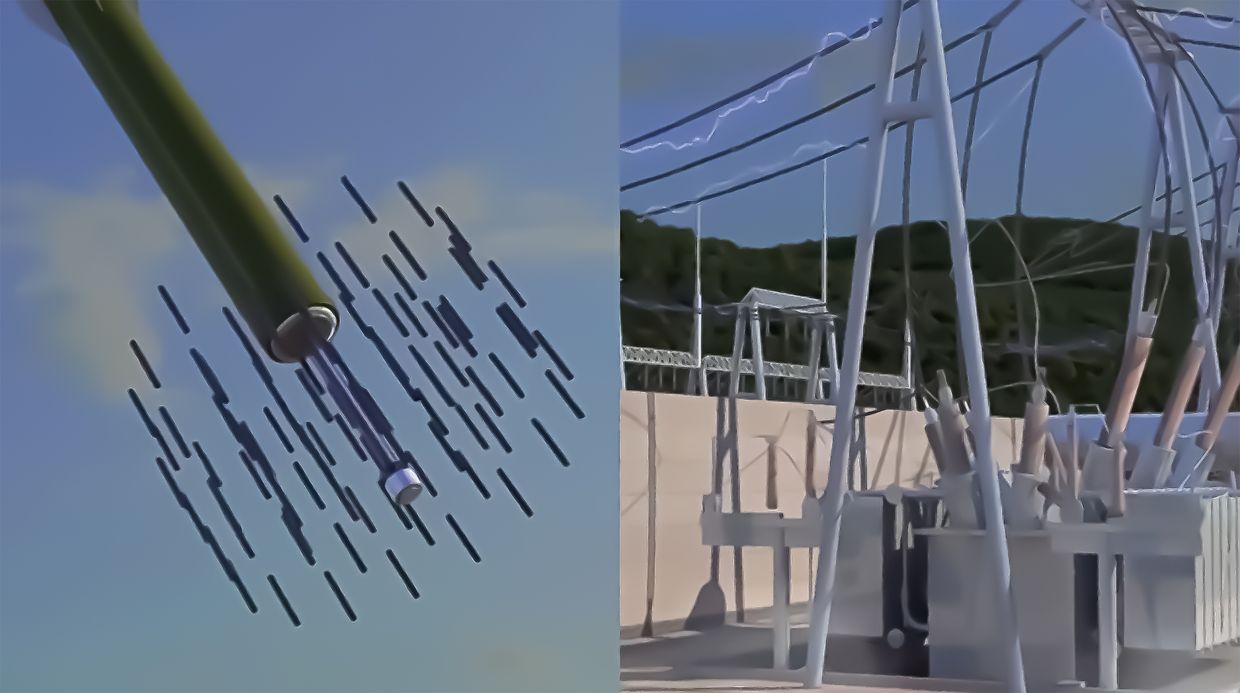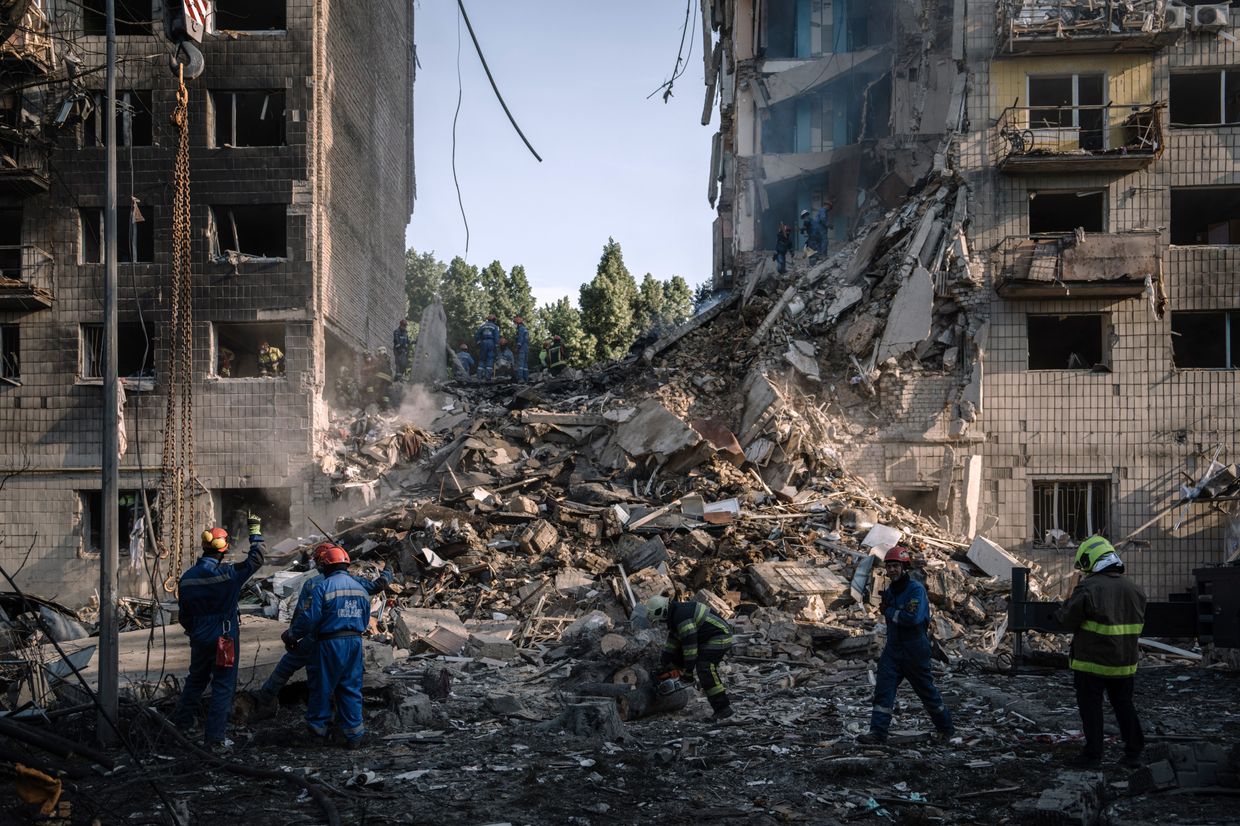The following is the eighth edition of our new Ukraine Business Roundup weekly newsletter. To get the biggest news in business and tech from Ukraine directly in your inbox, subscribe here.
Defying the odds
Ukraine seems to be running circles around Russia in the Black Sea these days.
Frequent Ukrainian attacks on Crimea have dealt a blow to Russia’s Black Sea Fleet, while vessels are coming and going from Ukraine’s Black Sea ports in defiance of Russia exiting the Black Sea Grain Initiative.
Despite exporting significantly lower volumes than the grain initiative brokered by Turkey and the UN last year, experts say Ukraine’s new trade route may be picking up steam, the Kyiv Independent’s Dominic Culverwell writes in his latest article.
As of late October, Ukraine has managed to export nearly 700,000 metric tons of grain through the temporary corridor — a start, but a fraction of the more than 30 million metric tons of food commodities exported under the grain initiative.
A total of 62 vessels have already used the corridor and 37 vessels carrying over 1.3 million metric tons of goods, including agricultural and metal products, have already departed the ports of Odesa since its inception, Ukraine’s Infrastructure Minister Oleksandr Kubrakov announced on Oct. 27.
Moscow has threatened to target vessels coming and going to Ukraine’s ports, putting many shipowners on edge. But the new route has become a lifeline for Ukrainian farmers struggling to get their products out of the embattled country.
“It’s still early days for the temporary corridor, but it’s encouraging to see a fairly steady flow of inbound ships. More vessels clearing the ports without incident will also help reassure other interested shipowners who may be on the fence,” Bridget Diakun, data analyst for Lloyd’s List Intelligence, told the Kyiv Independent.
Meanwhile, Ukraine has imposed tight controls over grain traders to boost revenue during wartime, which may further complicate shipments from the country’s Danube and Black Sea ports, Bloomberg reported.

A wind of change
Ukraine may have gotten one step closer to gaining access to frozen Russian assets to put toward its massive reconstruction needs, the Kyiv Independent’s Alexander Query writes in his latest article on frozen Russian assets.
European Union leaders on Oct. 27 expressed support for a proposal to use billions of euros in windfall taxes from Russian assets tied up in the West to rebuild Ukraine.
Following the start of Russia’s full-scale invasion last year, Kyiv’s allies managed to swiftly freeze over $300 billion from the Kremlin’s central bank reserves. Since then, they have tried identifying ways to send the earnings to Ukraine, but discussions have largely stalled.
“We're currently working on a proposal to initially focus on the so-called windfall profits," she said. "These profits are already quite substantial,” Ursula von der Leyen, the European Commission president, said at the end of an EU summit in Brussels.
Euroclear, Europe’s largest clearinghouse based in Belgium, said on Oct. 26 that it had earned 3 billion euros in profits on frozen Russian assets in the first nine months of this year.
The European Central Bank has warned that collecting the profits could destabilize and weaken the euro as other countries’ central banks may try and sell their euro-denominated assets if the EU seizes Russia’s frozen assets.
Proponents of using the windfall taxes and seizing the entirety of frozen Russian assets for Ukraine say doing so would send a powerful message to the Kremlin and that fears of effects on financial markets are overblown.
But 3 billion euros is a meager sum compared to the cost of rebuilding Ukraine in the wake of Russia’s brutal invasion, estimated to be at least $411 billion, according to the World Bank.
Meanwhile, the EU will start consulting with member countries on its 12th sanctions package against Russia over its invasion of Ukraine in the coming days.

Boom times
The U.S. defense industry has seen increased profits as Washington seeks new contracts to refill depleted domestic stockpiles and European countries are placing new weapons orders, Reuters reported on Oct. 27.
Some of the biggest U.S. defense contractors, such as Lockheed Martin and General Dynamics, reported a surge in revenue as governments around the world, including the U.S, increased their demand for weapons and ammunition.
The U.S. has sent Ukraine a significant amount of military equipment from its stockpile that must now be replaced with new orders. This need to backfill the U.S.'s stocks has buoyed the domestic defense industry.
The trend is not limited to the U.S. — European defense contractors have also seen increased demand and higher revenues.
Characterizing the U.S.'s aid for Ukraine as a boost for the American economy has also been considered as a potential way to help revive the flagging support among the population of the U.S., especially in the Republican party.
Lockheed Martin, which makes the High Mobility Artillery Rocket Systems (HIMARS), announced in September that it was planning to increase its current 1,000-employee count at its facility in Camden, Arkansas, by 20%.
General Dynamics, which also makes military equipment used by Ukraine, will open a new factory in Mesquite, Texas, that will employ more than 125 people and boost the local economy.
Ukraine has also seen a significant increase in its own domestic defense industry. More than 200 Ukrainian companies have begun developing drones, and Ukraine may soon be able to produce tens of thousands of drones monthly, according to Ukrainian officials.

Attracting private investment
Ukraine could attract $130 billion in private-sector investment to help rebuild if it makes key economic reforms, according to a new report.
The report, “Private Sector Opportunities for a Green and Resilient Reconstruction in Ukraine,” prepared by the International Finance Corporation (IFC) and the International Bank for Reconstruction and Development (IBRD), also says deepening EU integration will help bring private-sector financing.
In March 2023, the Second Rapid Damage and Needs Assessment (RDNA2), conducted by the World Bank, the EU, and the Ukrainian government, found that $411 billion worth of investments would be needed for reconstruction.
The new report assesses the potential for private financing to meet these needs under both a status quo scenario and a scenario with increased reforms, interventions in certain sectors, and EU integration.
In the latter scenario, the potential to raise private finance almost doubles, according to the report’s authors.
Under the non-reform scenario, which envisions a continuation of pre-invasion economic dynamics, private investments are estimated to generate over $73 billion, or 18% of the reconstruction needs identified in RDNA2.
Under a scenario where the Ukrainian government gets its act together, Ukraine could see nearly $130 billion in private-sector investments flow into the country, which could cover about one-third of the needs identified in the RDNA2, and open an additional $282 billion in further private sector opportunities to boost Ukraine’s development.
The report identifies four areas for reform with the greatest potential to drive a sustainable and resilient recovery: agriculture, transport and logistics, energy and extractives, and housing.

Making moves
One of Ukrainian tech’s favorite success stories, language tutoring platform Preply, opened a new office this past week in New York City’s West Village.
The company boasts 40,000 tutors teaching hundreds of thousands of students globally, and revenues have grown tenfold over the past three years. A hundred U.S.-based companies have signed up with Preply in the last year, the company said.
It has also secured over $170 million in funding and says it is “now set to supersize its growth in the U.S., leveraging a new AI-powered assistant that's fuelling productivity for both tutors and learners.”
I sat down for a brief chat with the company’s CEO, Kirill Bigai, to discuss the company’s plans for its New York Office, the role of AI in language learning, and whether the company is a unicorn yet.
Why the move to New York now, and what the plans are for the new management team in the new office?
The first reason to open an office in New York is talent. The U.S. is also one of our key markets, making up 25 to 30% of our revenue on the consumer side. On the B2B side, the U.S. has the majority of Fortune 500 companies, (some of which) need language training programs. This is an opportunity for us to be closer to those customers.
How do you see Preply’s role in changing the language-learning culture in the U.S.? As an American, I will allow myself to say Americans aren’t known for their language skills.
On the consumer side, we see a lot of people learning Spanish and a lot of people who have moved to the U.S. who want to improve their English skills.
On the B2B side, companies relocate employees from abroad and they want them to be able to speak business English and thrive in a business environment. Business English in the U.S. is very different from business English in other parts of the world.
The last large funding round was tied to generative AI — how can AI actually change a business that’s built on person-to-person tutoring?
We believe that the future of effective language learning is going to be human-led AI-assisted.
There are a lot of things we can do to better understand what learners and tutors are going through. Based on that, we can do an interesting analysis of learners’ strengths and weaknesses that can become a driver of what the next step for the learner is.
There are many tools already where you can practice your speaking, practice your pronunciation — those are the areas where we believe we can invest more.
My last question — is Preply’s valuation even in the ballpark of the frequently cited $400 million and is the goal to become a unicorn?
We decided to not disclose this information, but what I can say is that we have 40,000 active tutors monthly and hundreds of thousands of users.
But being a unicorn is not the goal, it's a starting point. I believe that the opportunity for Preply is much bigger.
We want to build a category-defining company where we can proudly say at some point that we made language learning so much more effective than it was before and had a real impact on humanity. I think that goes well beyond the unicorn mark.
What else is happening
Finance Ministry: Ukraine received almost $2.8 billion from international partners in October. Ukraine's state budget received about $2.8 billion in October 2023 from its international partners, namely the U.S. and EU, the Ministry of Finance announced on Oct. 31. The total sum included a $1.15 billion grant from the U.S. and $1.6 billion as part of a macro-financial assistance package from the EU. This year so far, Ukraine has received almost $11 billion in grants from the U.S.
Naftogaz CEO says Ukraine will not extend Russian transit deal. In an interview with Radio Free Europe/Radio Liberty, Naftogaz CEO Oleksii Chernyshov said that Ukraine has no plans to extend a contract for Russian gas transit through the country set to expire at the end of 2024. The European Commission, however, believes it is too early to comment on the upcoming expiration of the contract, European Commission Spokesperson Tim McPhie said.
Ukraine reveals remote-controlled, wheeled drone that can drive under Russian tanks. Ukrainian military tech developers created a new unmanned ground vehicle (UGV) with the ability to carry explosives and drive under armored vehicles, the project's spokesperson, Viktoriia Kovalchuk, told Business Insider on Oct. 25. "The main idea is that the robot (Ratel S) is used as a mobile warhead that carries anti-tank mines or other explosive devices," said Kovalchuk, adding that it can run for 40–50 minutes at an average speed or for up to two hours at a slower speed.
Media: Europe continues to import over $14 billion of Russian raw materials. Since the beginning of the full-scale invasion of Ukraine, the European Union has continued to import billions of euros worth of "critical" raw materials from Russia, media outlet Investigate Europe reported on Oct. 24. Between March 2022 and July 2023, statistics show that European countries imported 13.7 billion euros ($14.5 billion) worth of critical raw materials from Russia. While certain raw materials like oil, coal, and steel fall under EU sanctions, there are 34 minerals that the EU considers to be "critical" and have therefore avoided restrictions, the report said.
Russia hikes interest rates to 15% amid soaring inflation. The Russian Central Bank raised its key interest rate to 15% on Oct. 27 due to skyrocketing inflation and a declining ruble. This marks the fourth time the bank has raised lending costs this year. Since July, the bank has raised rates by a total of 7.5 percentage points. The latest spike represents an increase of 200 basis points. "Current inflationary pressures have significantly increased to a level above the Bank of Russia's expectations," the bank said in a statement.













